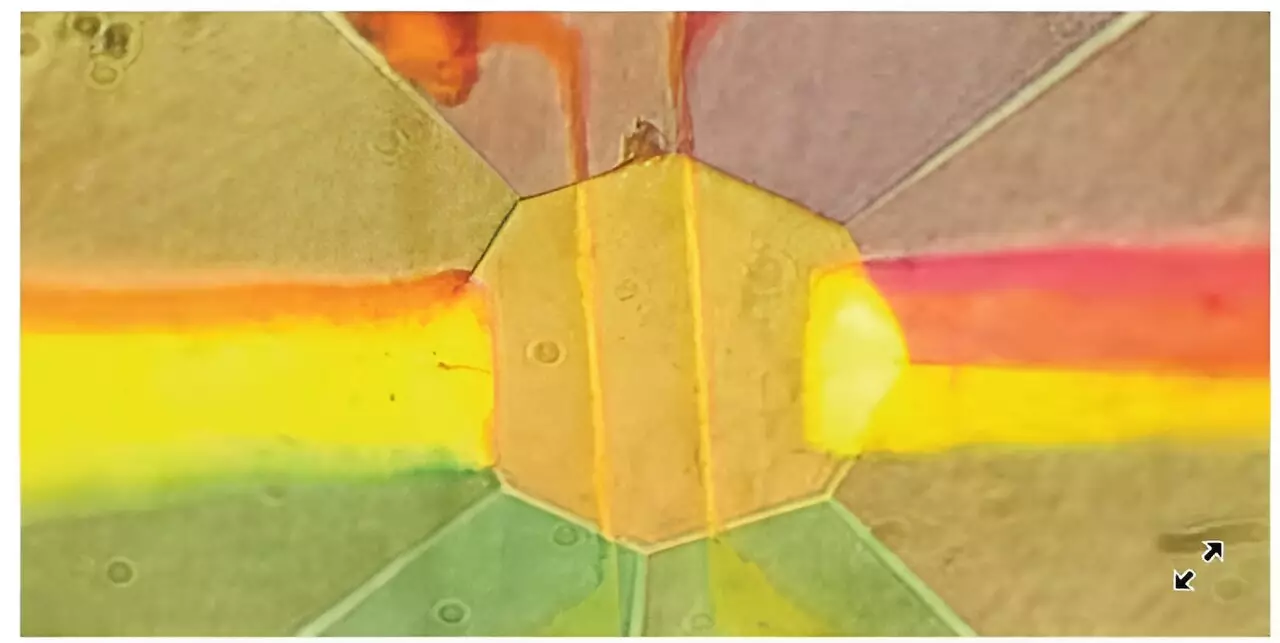In the realm of physics, the discovery of superconductivity is akin to finding a treasure chest in a deep, dark ocean. This phenomenon, first unveiled by Heike Kamerlingh Onnes in 1911 with metallic mercury, has captivated scientists for over a century. The magical ability of superconductors to conduct electricity without resistance once cooled to a critical temperature of 4.2 Kelvin has sparked an insatiable hunt for materials that could elevate this critical temperature even further. Scientists stand at the precipice of breakthroughs that could lead to unparalleled advancements in energy efficiency and technological capabilities. With the ultimate goal of achieving superconductivity at room temperature, researchers have engaged in painstaking experiments to analyze various elemental combinations, all while battling the formidable constraints posed by high-pressure environments.
Pushing the Boundaries of Science
Currently, the scientific community is exploring the superconductivity of various materials under extreme conditions. Many elements transition to superconductors under high pressure, a domain that presents inherent challenges in measurement and observation. However, a pioneering study published in the renowned journal Physical Review Letters has introduced groundbreaking techniques that may provide clarity in these complex parameters. Researchers from Germany and the United States have collaborated to shed light on superconducting sulfur, a relatively uncharted territory in this academic battleground. By subjecting sulfur to pressures that exceed 90 billion Pascals—an almost unfathomable force—scientists have been able to observe a striking transformation. This element metamorphoses from a nonmetal to a metallic state and subsequently enters a superconducting phase at low temperatures.
Innovative Methodologies in High-Pressure Research
Achieving the staggering pressures required for these experiments necessitates innovative technologies. The researchers employed diamond anvil cells, sophisticated devices capable of applying immense pressure on minuscule samples, ultimately yielding insights otherwise lost in mere conjecture. By using diamond tips that squeeze the sample between them, they can reach pressures up to 200 Gigapascals—essentially shoving it into an alternative physical reality where new properties emerge. One of the key challenges lies in measuring the electronic properties of these substances under such conditions. High pressure can distort the tunneling barriers employed in traditional electron measurement techniques leading to malfunction with detrimental effects on measurement accuracy.
This research endeavor introduces an ingenious solution; the development of a planar tunnel junction that can be fabricated in situ within the diamond anvil cell itself. This allows the exploration of sulfur’s superconducting properties under extreme conditions that extend beyond the 100 GPa mark. In this method, tantalum pentoxide serves as the insulating material, ensuring a stable tunneling gap that remains unaffected by external pressures. This innovation not only enhances the fidelity of measurements but also paves the way for examining a myriad of materials in the pursuit of revolutionary superconductors.
From Theory to Application: The Future of Superconductors
This ambitious research is not simply about the pursuit of knowledge; it has profound implications for technology and society. With the confirmation of sulfur’s critical temperature at 17 Kelvin, scientists have taken a significant leap toward understanding the superconducting gap, a crucial aspect of how superconductivity operates at the atomic level. The bridge between abstract theory and tangible application is supported by advancements in tunneling spectroscopy, which scrutinizes the electronic states of materials with unrivaled precision.
The implications for such advances are staggering, as Du, a researcher at the Max Planck Institute for Chemistry, points out. This “microscope” will revolutionize our understanding of materials under high pressure, unlocking the secrets of high-temperature superconductors. The potential to examine materials like hydrides and nickelates invites yet another dimension to the quest for room-temperature superconductors, with promises of groundbreaking discoveries that could one day transform the way we harness and transmit energy.
Charting a New Course in Material Science
The goal is astoundingly ambitious—not merely to understand how these materials work but to innovate new ones that could function under ambient conditions. Imagine a world where efficient energy transfer is not hindered by resistance or loss, where electrical grids hum with vitality, and technologies that currently rely on superconductivity can flourish without costly cooling systems. The quest for room-temperature superconductors is a promising frontier in material science that bears an exciting prospect for humanity’s sustainable energy future.
The exploration of materials under extreme conditions challenges not only our understanding of physics but also the essence of scientific inquiry itself. As the boundaries of knowledge expand, the tools and methodologies developed in this surge of research will continue to encourage researchers to push further, dream bigger, and ultimately realize a future where the wonders of superconductivity are accessible at everyday temperatures. The journey is far from complete, but each step taken in this remarkable quest underscores the resilience and creativity inherent to human innovation in the face of reality’s limitations.


Leave a Reply